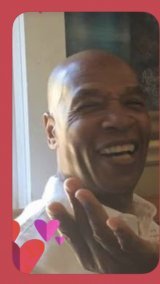Analysis of Einstein-de Saussure-Jung
The Thing and the Thought.
The concrete and the abstract.
The Thing as a Thought.
The Thought as a Thing.
The Signifier and the Signified.
God as The Signified.
God’s image as The Signifier.
The Signifier as God The Son.
Made visible by The Invisible.
As God The Father.
Becoming God The Son.
The Spirit of One in “The Other.”
The abstract made concrete
by the form-action of the concrete,
bereft of abstraction:
An indeterminate symbol reduced to a sign!
An in-sign-ificant unit of meaning.
A meaning-less sign of signs:
Words, images, actions—
pointlessly hidden, obscured!
In a Saussure’s riddle of arbitrary signs
lies an Einstein’s quantum riddle,
Juxtaposed in Jungian synchronicity
as a-causal space-time phenomena.
All three in kinetic display as signifiers
revealing potential energy of the signified
that is stored by quanta of symbols
in relative space and time.
| Scheme | AXAB CCDE FDED GGEX BHXX HFXX HCXX |
|---|---|
| Poetic Form | |
| Metre | 01001 0010001 01101 01101 010010 11010 110101 011101 1100100100 11010 010101 010110010 001101 101101001 011010 101001001101 101110110 0101111 110010 11001 0011011001 1111010 010100100 1010110100 1100100111 0100101001010 11111110 0100101 |
| Closest metre | Iambic tetrameter |
| Characters | 897 |
| Words | 171 |
| Sentences | 18 |
| Stanzas | 7 |
| Stanza Lengths | 4, 4, 4, 4, 4, 4, 4 |
| Lines Amount | 28 |
| Letters per line (avg) | 25 |
| Words per line (avg) | 5 |
| Letters per stanza (avg) | 100 |
| Words per stanza (avg) | 20 |
About this poem
This poem suggests intuitively that there appears to be an underlying connection between Ferdinand de Saussure’s Cours de linguistique générale, Jung’s a-causal principle of synchronicity and its association with the Jungian notion of the collective unconscious; and Einstein’s space-time theory of relativity. With all three theorists — the semiotician, the theoretical physicist, and the analytical psychologist — we suggest that there appears to be an underlying commonality, as follows: The phenomenon of quanta particles can be identified as appearing in Saussure’s linguistics as elements of phonemic quanta (the signified); and in Jungian psychology as indeterminate quanta of forms (identified as “the signified”), called symbols by Jung. When loaded with kinetic energy, these symbols or archetypes become “signifiers” or”signs” that have the potential to appear in the external world of form, and to consequently act upon it. I propose that Einstein’s “quantum riddle” of subatomic particles that mirror changes in each other instantaneously over distances is, in some ways, akin to Jung’s notion of a-causal phenomena of synchronicity; and to de Saussure’s “abstract phonemic quanta” where the phoneme, postulated as the smallest unit of speech sound (sound quantum) , is capable of acting upon and distinguishing one word (a concrete, signified manifestation) from another word (another concrete signified manifestation) in linguistic space and time. Clearly, multidisciplinary scientific research is recommended, and is required to investigate and shed light on a subject that is unclear, hazy, fuzzy, and shrouded in ambiguity. more »
Written on January 18, 2022
Submitted by karlcfolkes on January 18, 2022
Modified on April 28, 2023
- 51 sec read
- 393 Views
Citation
Use the citation below to add this poem analysis to your bibliography:
Style:MLAChicagoAPA
"Einstein-de Saussure-Jung" Poetry.com. STANDS4 LLC, 2024. Web. 21 May 2024. <https://www.poetry.com/poem-analysis/117996/einstein-de-saussure-jung>.


Discuss this Karl Constantine FOLKES poem analysis with the community:
Report Comment
We're doing our best to make sure our content is useful, accurate and safe.
If by any chance you spot an inappropriate comment while navigating through our website please use this form to let us know, and we'll take care of it shortly.
Attachment
You need to be logged in to favorite.
Log In